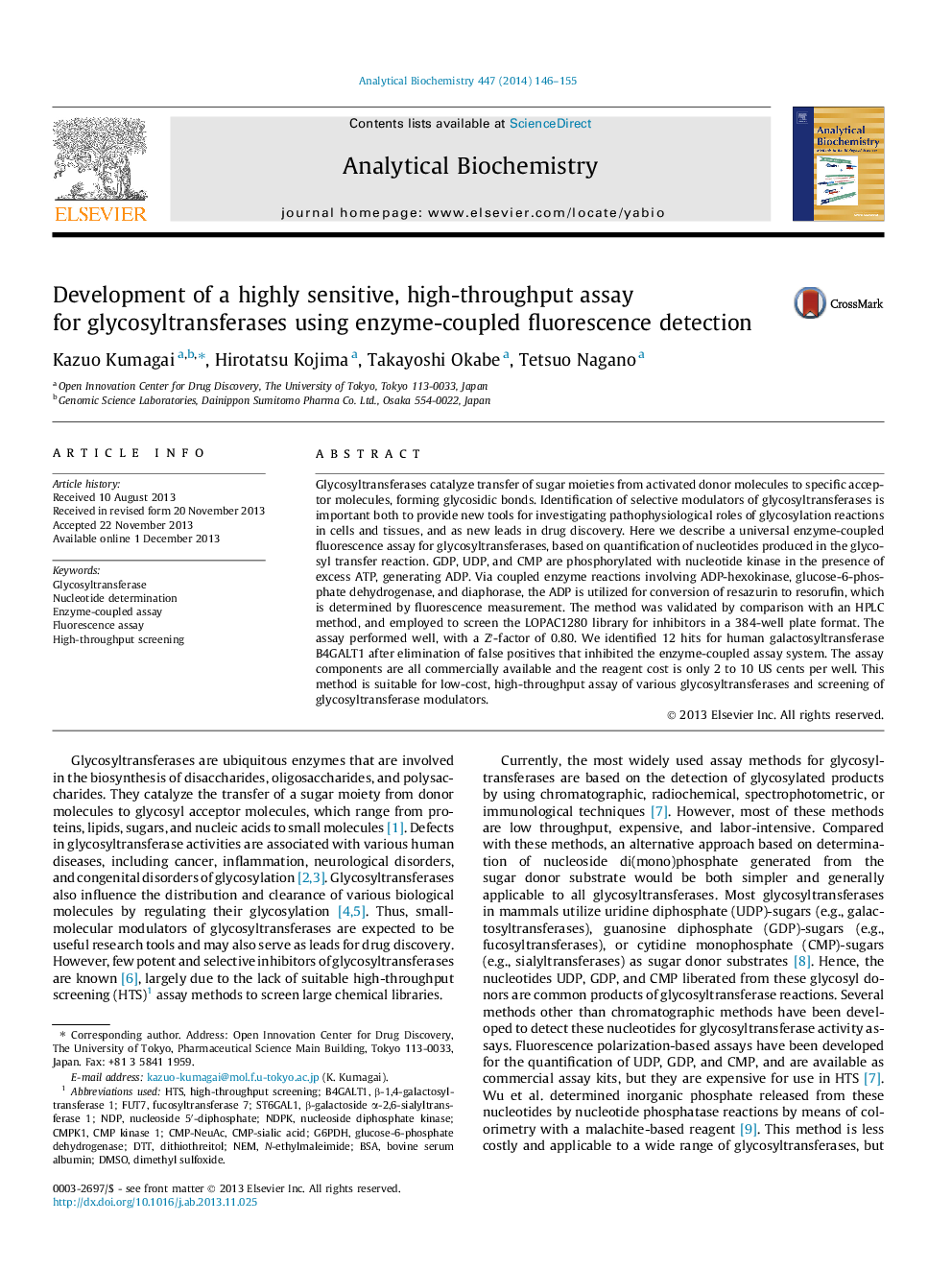| Article ID | Journal | Published Year | Pages | File Type |
|---|---|---|---|---|
| 1173946 | Analytical Biochemistry | 2014 | 10 Pages |
Glycosyltransferases catalyze transfer of sugar moieties from activated donor molecules to specific acceptor molecules, forming glycosidic bonds. Identification of selective modulators of glycosyltransferases is important both to provide new tools for investigating pathophysiological roles of glycosylation reactions in cells and tissues, and as new leads in drug discovery. Here we describe a universal enzyme-coupled fluorescence assay for glycosyltransferases, based on quantification of nucleotides produced in the glycosyl transfer reaction. GDP, UDP, and CMP are phosphorylated with nucleotide kinase in the presence of excess ATP, generating ADP. Via coupled enzyme reactions involving ADP-hexokinase, glucose-6-phosphate dehydrogenase, and diaphorase, the ADP is utilized for conversion of resazurin to resorufin, which is determined by fluorescence measurement. The method was validated by comparison with an HPLC method, and employed to screen the LOPAC1280 library for inhibitors in a 384-well plate format. The assay performed well, with a Z′-factor of 0.80. We identified 12 hits for human galactosyltransferase B4GALT1 after elimination of false positives that inhibited the enzyme-coupled assay system. The assay components are all commercially available and the reagent cost is only 2 to 10 US cents per well. This method is suitable for low-cost, high-throughput assay of various glycosyltransferases and screening of glycosyltransferase modulators.
